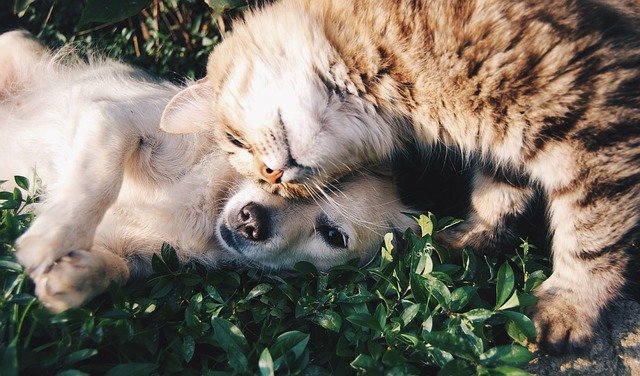When we first met our puppy, Cooper, he was already sixteen weeks old. We had arranged to meet Cooper and his owners at a park in Las Vegas, Nevada. My husband arrived home from military training and we drove directly to the park from the airport.
When the owners got Cooper out of the car, we noticed that the fur around his mouth was a little bit wet. We didn’t think much of it and quickly began playing with our new fluffy puppy. Cooper didn’t seem as excited to see us as we were him, but we decided to take Cooper home with us.

We headed towards our vehicle and loaded him into his puppy kennel. As soon as we hit the freeway on-ramp, I noticed large strings of drool coming from Cooper’s mouth. A few minutes later, I heard the dreaded dog heaving noise coming from the crate in the back of the car. I turned around to see Cooper depositing torrential amounts of drool on the floor of the crate. Minutes later, his last meal followed suit. The flashback of Cooper’s wet mouth suddenly made so much sense
We quickly pulled off and cleaned the poor puppy and the car. Once the damage had been contained, we got back in the car and eventually made it home. Cooper didn’t have any more bouts of drooling or vomiting, so we weren’t concerned. After a bath and some water, Cooper perked up and became acquainted with his new surroundings.
A week later, we decided to take Cooper hiking with us at Valley of Fire State Park. This park was about an hour’s drive from our condo. A look of pure disgust crossed our poor puppy’s face as we headed towards the vehicle. We loaded Cooper into the car and naively drove out of town. About fifteen minutes into our trip, the downpour of drool began. He started an odd pattern of behavior that included: standing up, sitting down, turning around, and repeat. We hoped a recurrence of the prior week wasn’t about to begin. Unfortunately, our fear became a reality when Cooper got very sick as we pulled into the park.
When we prepared for pet-owning, we discussed and researched different things that could go wrong with our puppy. However, motion sickness was not one of them. We already had been cat owners for a few years. How much different could it be? After a consultation with our veterinarian, we were happy to hear that Cooper wasn’t deathly ill and that motion sickness was to blame.
He recommended keeping Cooper in his crate as we had been doing, lowering our car windows when driving, and limiting his food and water intake prior to travel. He also informed us that pets can associate these negative vomiting and drooling experiences with vehicles and begin to fear traveling. Helping Cooper feels more comfortable in the car could help avoid this predicament.
Fortunately, Cooper’s motion sickness has gotten better with age. Cooper has learned that the car takes him to fun places like the dog park, to Grandma’s (where he is incredibly spoiled), or to the lake for a swim. Thankfully, he has also stopped guilt tripping us with his big brown eyes when we walk towards the car.
We do still have to drive with the windows down and he does frequently practice the up, down, and repeat. He has successfully made a few cross country moves with us without the fountains of drool.
Has your dog had motion sickness while traveling? If so, how did you help your pet feel more comfortable in the car?
